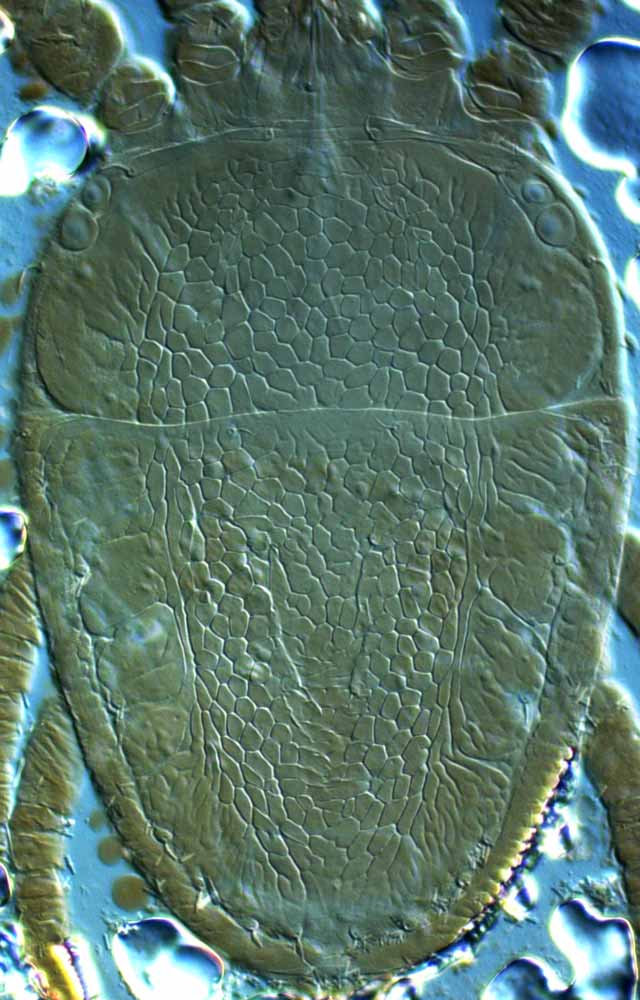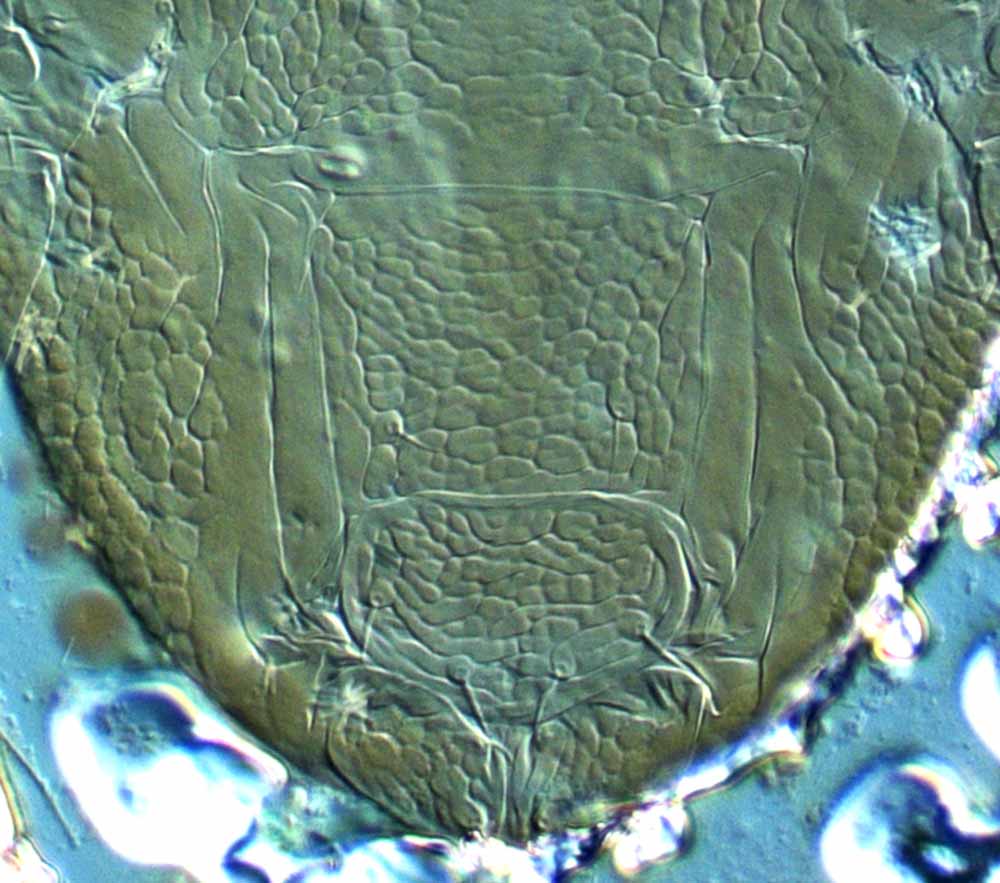Brevipalpus californicus species group - species C
|
Fig. 1. Brevipalpus californicus group species C, female dorsum. |
|
Fig. 2. Brevipalpus californicus group species C, female posterior venter. |
Species group characters
B. californicus species group (sensu Baker & Tuttle 1987) = f2 present; tarsus II with 2 solenidia; palp 4-segmented with 3 distal setae; dorsal central setae (c1, d1, e1) different in shape to dorsal lateral setae (c3, d3, e3)
Characters
- opisthosomal setae f2 present (= 7 setae around opisthosomal margin)
- tarsus II with 2 solenidia distally (one antiaxial, one paraxial)
- prodorsum cuticle entirely reticulate, with even cells (Fig. 1)
- dorsal opisthosoma between c1-c1 and e1-e1 evenly reticulate; often a few short weak transverse folds between e1-e1; cuticle posterior e1-e1 reticulate (Fig. 1)
- ventral plate with medium rounded cells (Fig. 2)
- genital plate with medium rounded cells (Fig. 2)
- spermatheca usually a long strong, relatively thick duct, beginning at genital opening between anal plates and genital plate, ending in a rounded vesicle with a crown of short finger-like projections along dorsal margin
- the spermathecal vesicle has a distinct clear "bubble" visible internally; the vesicle is generally quite visible, and is often located near coxae IV
- palp femur seta strong, tapered, barbed
- palp tarsus with 3 setae
- trochanter III with 2 setae
Distribution based on confirmed specimens
Nigeria, Peru, Thailand
Hosts based on confirmed specimens
Citrus sp. (Rutaceae); sweet potato Ipomoea batatas (Convolvulaceae)



